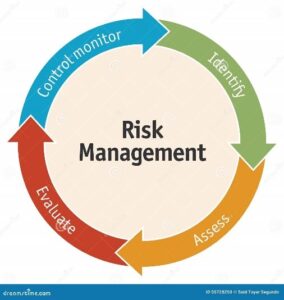Introduction

In today’s complex business landscape, effective enterprise governance and risk management are crucial for organizations to thrive. The interplay between these two functions can determine the success or failure of a compliance culture within an organization. This article will delve into the key factors that influence the relationship between enterprise governance and risk management, highlighting the importance of trust and collaboration for achieving corporate performance and mitigating downside risk.
Incentives and Culture: The Foundation of Compliance
A strong compliance culture is built upon a foundation of aligned incentives, leadership styles, and transparency. These factors shape the overall compliance culture within an organization and determine its effectiveness. When enterprise governance and risk management work in harmony, they create a competitive advantage. However, inherent mistrust can arise due to conflicting incentives and goals.
To address this issue, leaders in enterprise governance and risk management must focus on building trust. By fostering an environment of trust, these leaders can leverage it to their advantage. Collaboration and engagement between enterprise governance and risk management can lead to positive outcomes such as increased corporate performance and team satisfaction. This trust also reduces downside risk, as employees are more willing to speak up and self-report errors.
“Developing unconditional trust will lead to a free exchange of knowledge and information, resulting in increased corporate performance and reduced downside risk.”
Collaboration: Bridging the Gap
Collaboration between enterprise governance and risk management is essential for several reasons. Firstly, risk management should not be seen as a mere bolt-on function of enterprise governance. It needs to move from a non-traditional leadership role with indirect reporting lines. Secondly, the rapidly changing business environment, including factors such as social media, technology, and AI, necessitates collaboration between these two functions. Additionally, as the corporate environment evolves, new leadership skills are needed, along with a focus on diversity, equity, inclusion, and changing cultural views of risk management.
Identifying and addressing toxic leaders or managers is crucial to counter the negative effects on trust, information flow, and knowledge sharing. By acknowledging and addressing these issues, organizations can make better-informed decisions, enhance productivity, and reduce downside risk.
“Collaboration between enterprise governance and risk management is essential to make informed decisions, enhance productivity, and reduce downside risk.”
Results: Unlocking Corporate Performance
Improving trust between enterprise governance and risk management can have a profound impact on corporate performance. When information and knowledge flow freely across the organization, it significantly reduces downside risk and enhances upside risk. This, in turn, contributes to a positive brand awareness and perception.
By integrating risk management as a collaborator for corporate success, rather than a perceived bolt-on function, organizations can leverage collaboration and adapt to the rapidly evolving business environment. Embracing the changing landscape and utilizing the collective expertise of enterprise governance and risk management can lead to improved corporate performance and increased competitive advantage.